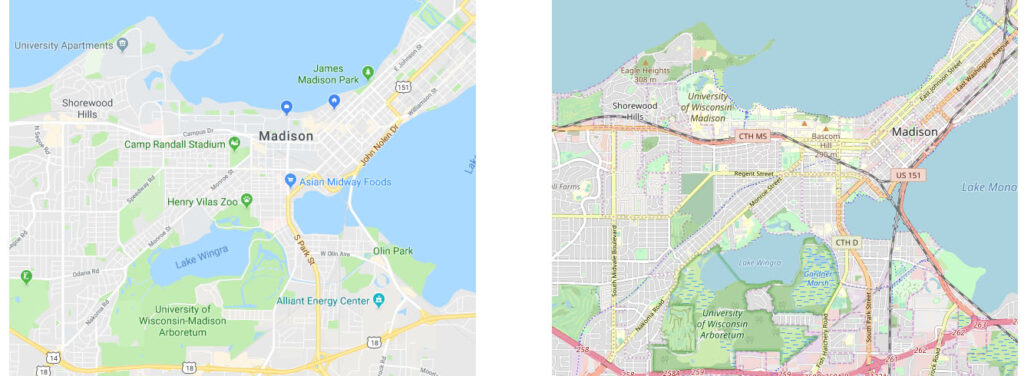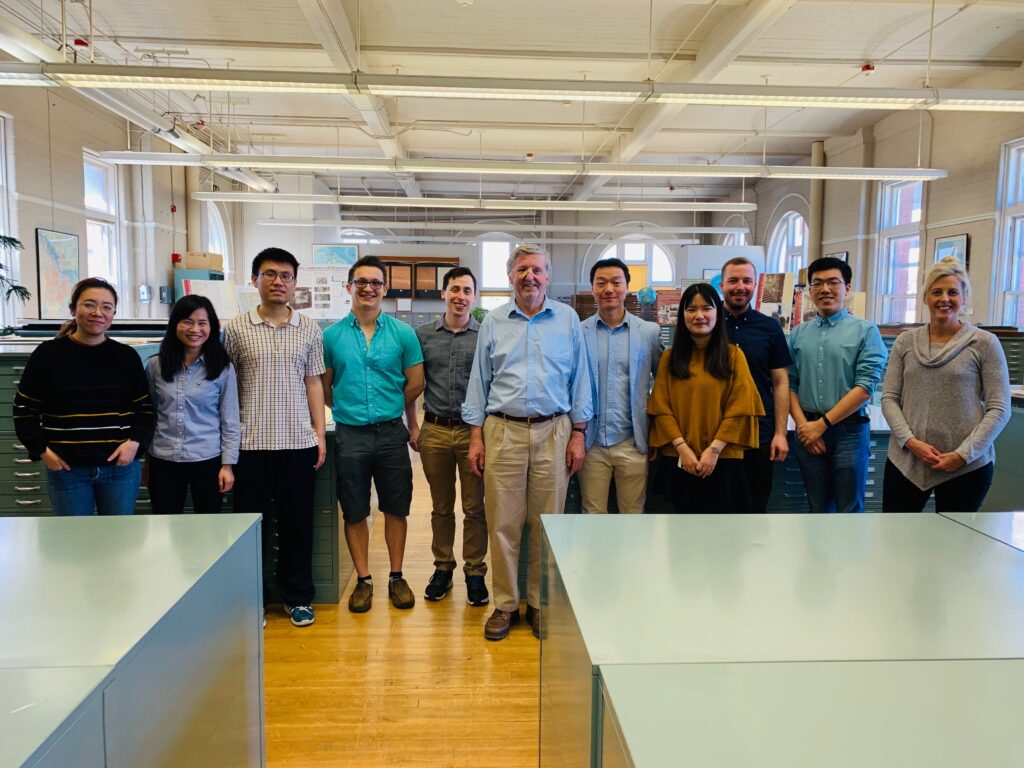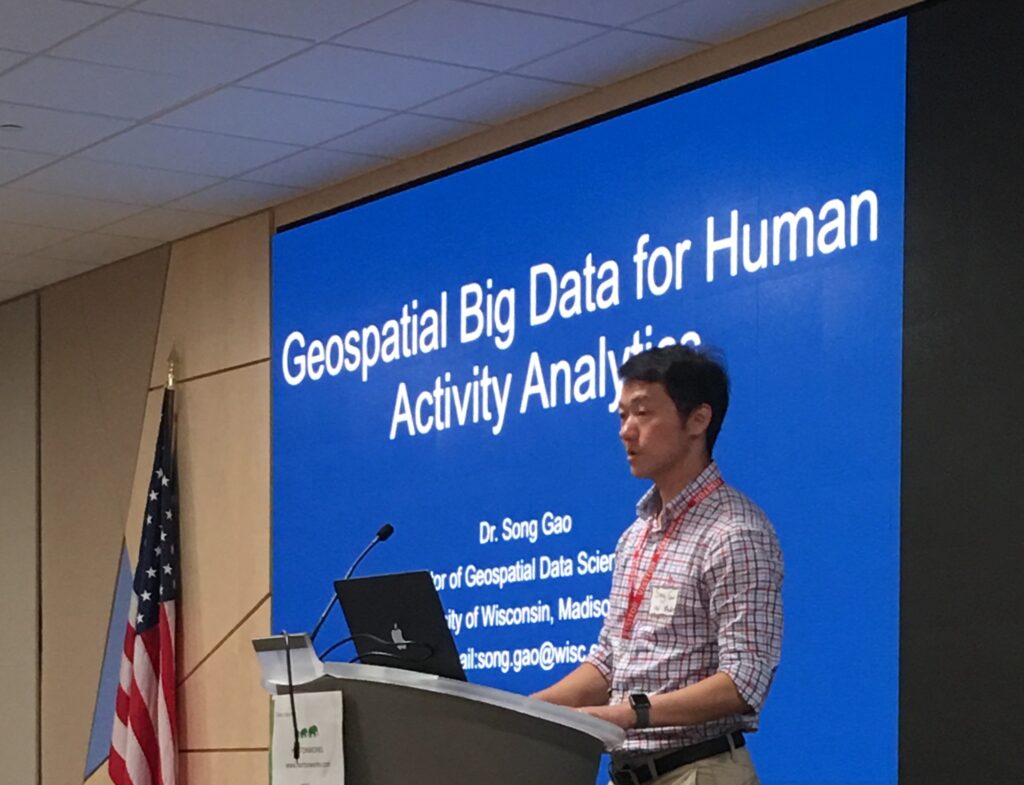PI: Prof. Dr. Song Gao
Funded by UW-Madison Office of the Vice Chancellor for Research and Graduate Education (VCRGE) and the Wisconsin Alumni Research Foundation (WARF).
Abstract:
Place names and the semantics of places described in natural languages rather than coordinates (i.e., longitude and latitude) are pervasive in human discourse, documents, and social media while location needs to be specified for mapping or interlinking other information. However, there is still a gap between the informal or vague cognition expressions of place (e.g., downtown, neighborhood, up north Wisconsin) and the formal computational representations of place in computerized information systems. Cognitive regions and places are notoriously difficult to represent in geographic information science and systems. They arise from the complex interactions of individuals, society, and the environment.
The emergence of big data brings new opportunities to better understand our geographic and socioeconomic environments. In this research, we will synthesize multi-source datasets from census, location-based social networks, news media, Wikipedia, travel blogs, and other open data websites, and utilizing the theory of place, natural language processing, machine learning, and visualization techniques for extracting and representing vague cognitive places. The research will also help better understand individuals’ observations, experiences, and exposures to different types of places and ambient social environments.
References:
Gao, S., Janowicz, K., Montello, D. R., Hu, Y., Yang, J. A., McKenzie, G., Ju, Y., Gong, L., Adams, B., & Yan, B. (2017). A data-synthesis-driven method for detecting and extracting vague cognitive regions. International Journal of Geographical Information Science, 31(6), 1245-1271.
Gao, S., Li, L., Li, W., Janowicz, K., & Zhang, Y. (2017). Constructing gazetteers from volunteered big geo-data based on Hadoop. Computers, Environment and Urban Systems, 61, 172-186.
Gao, S., Janowicz, K., & Couclelis, H. (2017). Extracting urban functional regions from points of interest and human activities on location‐based social networks. Transactions in GIS, 21(3), 446-467.
Gao, S., Janowicz, K., McKenzie, G., & Li, L. (2013, November). Towards Platial Joins and Buffers in Place-Based GIS. In Proceedings of The First ACM SIGSPATIAL International Workshop on Computational Models of Place (pp. 42-49).
Prestby, T., App, J., Kang, Y., & Gao, S. (2019). Understanding Neighborhood Isolation through Spatial Interaction Network Analysis using Location Big Data. Environment and Planning A: Economy and Space.
Papadakis, E., Gao, S., & Baryannis, G. (2019). Combining Design Patterns and Topic Modeling to Discover Regions Supporting Particular Functionality. ISPRS International Journal of Geo-Information. 8(9), 385.
Liu, Y., Yuan, Y., & Gao, S. (2019). Modeling the Vagueness of Areal Geographic Objects: A Categorization System. ISPRS International Journal of Geo-Information, 8(7), 306. DOI:https://doi.org/10.3390/ijgi8070306
Blaschke, T., Merschdorf, H., Cabrera-Barona, P., Gao, S., Papadakis, E., & Kovacs-Györi, A. (2018). Place versus Space: From Points, Lines and Polygons in GIS to Place-Based Representations Reflecting Language and Culture. ISPRS International Journal of Geo-Information, 7(11), 452.
Yan, B., Janowicz, K., Mai, G., & Gao, S. (2017, November). From ITDL to Place2Vec: Reasoning About Place Type Similarity and Relatedness by Learning Embeddings From Augmented Spatial Contexts. In Proceedings of the 25th ACM SIGSPATIAL International Conference on Advances in Geographic Information Systems (p. 35). ACM.
Hu, Y., Gao, S., Janowicz, K., Yu, B., Li, W., & Prasad, S. (2015). Extracting and understanding urban areas of interest using geotagged photos. Computers, Environment and Urban Systems, 54, 240-254.
Liu, Y., Liu, X., Gao, S., Gong, L., Kang, C., Zhi, Y., Chi, G., & Shi, L. (2015). Social sensing: A new approach to understanding our socioeconomic environments. Annals of the Association of American Geographers, 105(3), 512-530.
McKenzie, G., Janowicz, K., Gao, S., & Gong, L. (2015). How where is when? On the regional variability and resolution of geosocial temporal signatures for points of interest. Computers, Environment and Urban Systems, 54, 336-346.
McKenzie, G., Janowicz, K., Gao, S., Yang, J. A., & Hu, Y. (2015). POI pulse: A multi-granular, semantic signature–based information observatory for the interactive visualization of big geosocial data. Cartographica: The International Journal for Geographic Information and Geovisualization, 50(2), 71-85.
























